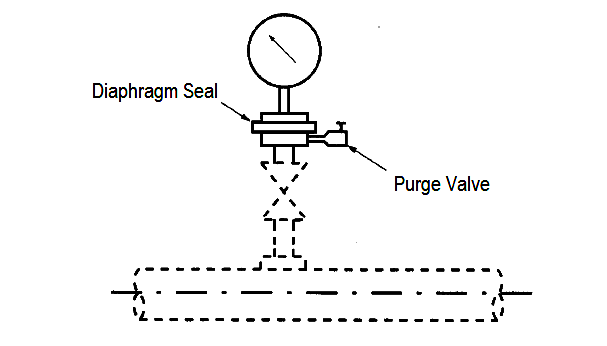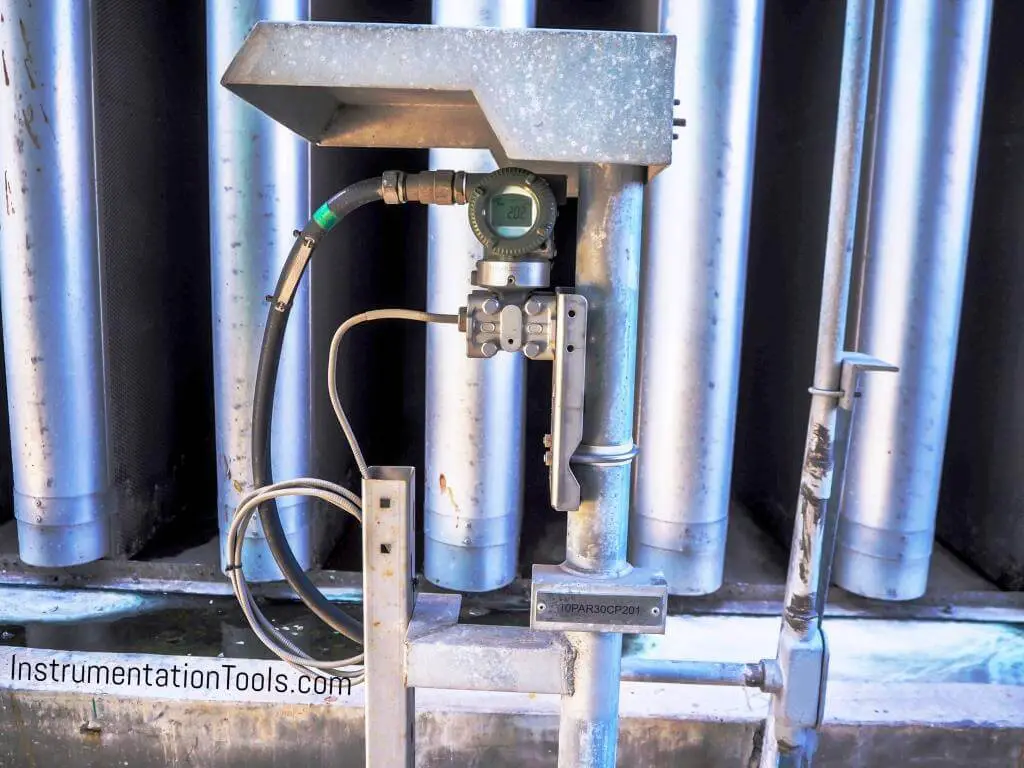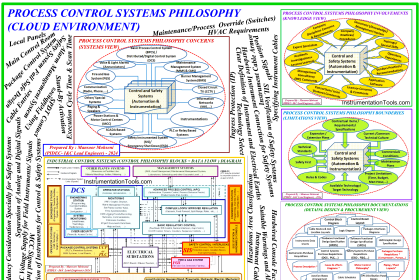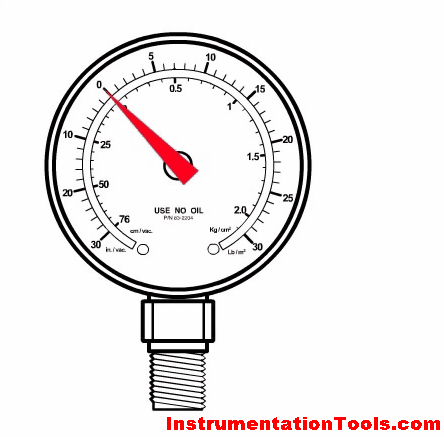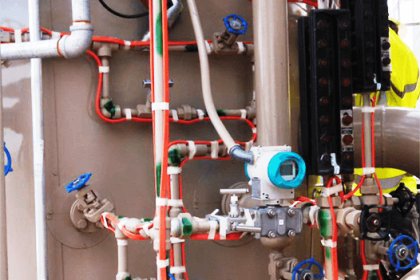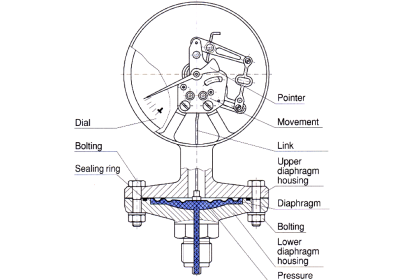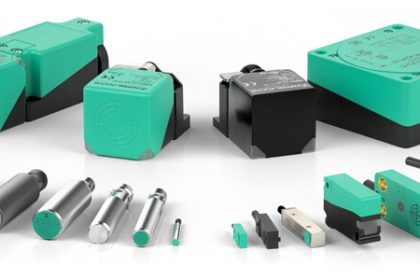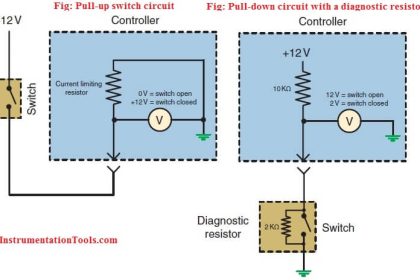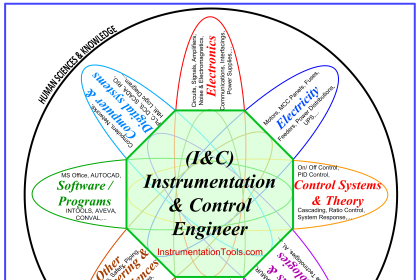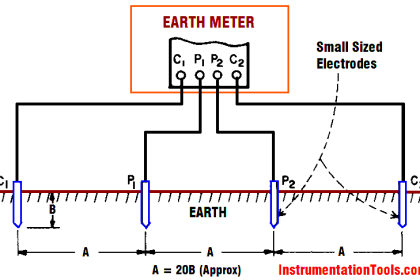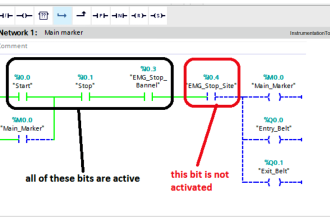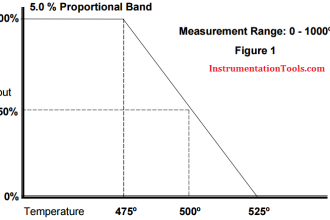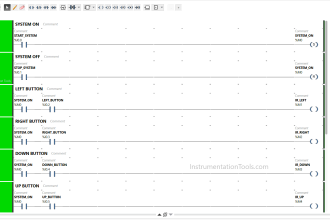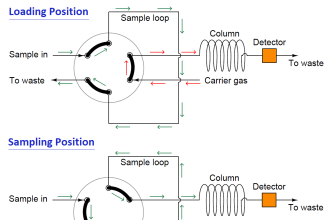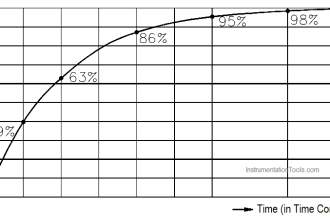Here we shall see recommended practices for the protection of the instrument from harsh process conditions. In this article, we shall learn about Diaphragm seal and liquid seal methods to protect the instrument.
A seal can be a mechanical isolator between process and instrument or it can be part of piping filled with fluid.
These protection methods are generally used with pressure transmitters, DP transmitters, pressure gauges, and piping that connects these instruments to the process.
Diaphragm Seal
Diaphragm seals are used in the following cases.
- When process fluid must be isolated
- Slurry services
- Toxic/corrosive services
- High-temperature fluid.
- When fluid has the tendency to clog or freeze in ambient temperatures.
Pressure-gauge and pressure-switch seals (see Figure below) usually consist of a diaphragm and a diaphragm holder into which the instrument is connected, a seal fluid is enclosed in the chamber between the diaphragm and the gauge. The holder, diaphragm, and gasket materials are selected to be compatible with the process fluid (silicon oil mostly).
The diaphragm is generally welded into the holder, but it may also be clamped and gasketed. The seal fluid should be non-flammable, have low vapor pressure and thermal expansion, and in the case of a diaphragm rupture, be compatible with and non-contaminating to the process.
Seals for pressure and differential-pressure transmitters are available in a variety of configurations. A common style is a diaphragm mounted in a wafer, clamped between piping flanges, and connected to the transmitter with an armoured capillary (see Figure below). This style, which uses two seals, is used for flow metering and level measurement in vessels under pressure or vacuum.
In some applications, capillaries can be as long as 35 feet (10 meters). To avoid measurement errors, it is necessary to select capillaries of equal length and maintain them at the same temperature. To maintain a good response and minimize temperature gradients on the capillaries, the capillary length should be as short as possible.
A similar style, which uses one seal, is used to measure pressure or the differential pressure between two streams when only one stream requires a seal. Measurement of differential pressure between combustion fuel oil and atomizing steam is an example of this application.
The level in atmospheric tanks can be measured with a seal assembly attached directly to the transmitter body. When no condensable materials are contained in the vapor space above the liquid, it is possible to connect a reference line to the low-pressure side of the transmitter and use it for measurement in a vessel under pressure.
Whenever it has been determined that a diaphragm seal is required, the user should work closely with the supplier to ensure that the instrument configuration is appropriate for the application. Care should be taken to ensure that the seal fluid will operate over the required temperature range and be compatible with the process.
Seals
Liquid Seals
In many standard transmitter installations, the seal is the process fluid. Most liquid flowmeters, steam meters, and condensable-vapor meters are sealed in this manner. The liquid cools, and the transmitter is not subjected to the process temperature.
In many locations where steam is used, the condensed water must be protected from freezing. Whenever possible, the process fluid is the most desirable seal liquid, since fresh supply is readily available if the seal is lost through leakage or dis-operation.
If a process stream contains hydrocarbons and water, it is likely that the fluid in the impulse lines will separate into two phases. If the transmitter is a flowmeter, different amounts of water could accumulate in the two sections of the piping, which could result in measurement errors. To prevent this, the piping should be filled with water or an ethylene-glycol- water mix, or else water-dropout pots should be used. In many locations, the use of glycol-water can eliminate the need for heating.
The seal fluid must be compatible with the process stream. The selected fluid must have a density higher than that of the process stream. It should be non-corrosive and have a low vapor pressure at the process temperature. Whenever non- process seal fluids are used, permanent warning tags or a special paint color should be used to indicate that a special seal fluid is enclosed.
Interest to add any further points? Share with us through below comments section.
Author: Kalpit Patel
Read Next:
- Chemical Seal Pressure Transmitter
- Diaphragm Seal Material
- Remote Diaphragm Seal Transmitter
- Orifice Plate Flow Requirement
- Pressure Control Loop Problems
